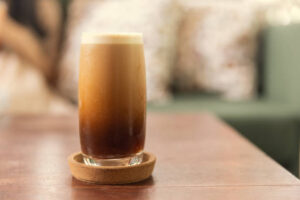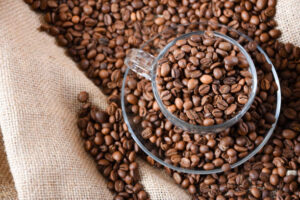For coffee lovers, the question for the perfect cup is a never-ending adventure. The aroma, the flavor, and the experience of sipping that flawless brew can transform an ordinary day into something extraordinary. Whether you’re an experienced barista or just starting your coffee-making journey, this guide will help you master the art of brewing the perfect cup of coffee.
This blog post will unravel the secrets behind the perfect brew, exploring various methods and tips to elevate your coffee game. From selecting the right beans to mastering brewing techniques, we’ll walk you through every step to ensure your coffee is nothing short of perfection.
Choosing the Right Coffee Beans
Understanding Coffee Bean Varieties
The foundation of any great cup of coffee starts with the beans. Coffee beans come in two primary varieties—Arabica and Robusta. Arabica beans are known for their smooth, complex flavors and are typically considered superior to Robusta, which has a stronger, harsher taste.
Arabica beans are more expensive and delicate, requiring specific growing conditions. They offer a wide range of flavors, including fruity, nutty, and floral notes. On the other hand, Robusta beans contain more caffeine and have a more bitter taste, often used in espresso blends to add depth and crema.
Importance of Freshness
Freshness is key to a perfect cup of coffee. Coffee beans start to lose their flavor shortly after being roasted. Aim to buy freshly roasted beans and use them within two to three weeks for optimal flavor. Always check the roast date on the packaging to ensure freshness.
The Right Roast for You
Coffee beans are available in various roast levels—light, medium, and dark. Light roasts retain most of the beans’ original flavors and are often more acidic. Medium roasts strike a balance between acidity and body, while dark roasts have a fuller body and a more intense, bold flavor. Your roast preference will depend on your taste and the brewing method you choose.
The Art of Grinding
Grind Size Matters
The grind size of your coffee beans can significantly impact the taste of your coffee. Different brewing methods require different grind sizes. For instance, a coarse grind is ideal for French press, while a fine grind works best for espresso. Understanding the right grind size for your brewing method is crucial for extracting the perfect flavors.
Using a Quality Grinder
Investing in a high-quality grinder is essential. Burr grinders are preferred over blade grinders as they provide a consistent grind size, which is vital for uniform extraction. Consistency in grind size helps achieve an even extraction, resulting in a balanced and flavorful cup of coffee.
Grinding Just Before Brewing
To preserve the freshness and flavor of your coffee, grind your beans just before brewing. Pre-ground coffee loses its aroma and taste quickly, leading to a less enjoyable cup. Grinding fresh allows you to capture the full spectrum of flavors that the beans offer.
Mastering the Brewing Methods
French Press
The French press is a popular method known for producing a rich and full-bodied cup of coffee. To use a French press, start with coarsely ground coffee and hot water just off the boil. Add the coffee grounds to the press, pour the hot water over them, stir, and let steep for four minutes before pressing the plunger down slowly.
Pour-Over
Pour-over coffee is celebrated for its clarity and bright flavors. Use a medium-coarse grind and a quality pour-over dripper like the Hario V60 or Chemex. Place a filter in the dripper, add the coffee grounds, and pour hot water in a slow, circular motion to ensure even saturation. The process allows for precise control over the brewing time and water flow, resulting in a clean and vibrant cup.
Espresso
Espresso is a concentrated coffee brewed by forcing hot water through finely-ground coffee under high pressure. It forms the base for various coffee drinks like lattes and cappuccinos. Using a good espresso machine, start with freshly ground coffee, tamp it evenly in the portafilter, and extract for about 25-30 seconds. The result should be a shot with a rich, golden crema on top.
Cold Brew
Cold brew coffee offers a smooth, less acidic flavor, perfect for hot days. Use a coarse grind and mix the coffee grounds with cold water. Steep the mixture in the fridge for 12-24 hours, then strain it to remove the grounds. The resulting concentrate can be diluted with water or milk and served over ice.
Enhancing Your Coffee Experience
Water Quality
Water quality plays a critical role in coffee brewing. Use filtered water to avoid impurities that can alter the taste. The ideal water temperature for brewing coffee is between 195°F to 205°F (90°C to 96°C). Water that’s too hot can over-extract the coffee, making it bitter, while water that’s too cool can under-extract, resulting in a weak and sour cup.
Measuring Coffee and Water
Achieving the perfect coffee-to-water ratio is essential for a balanced cup. A general guideline is to use one to two tablespoons of coffee per six ounces of water. However, you can adjust the ratio based on your preference for a stronger or milder brew. Using a digital scale for precise measurements ensures consistency in every cup.
Experimenting with Flavors
Don’t be afraid to experiment with different flavor profiles. Try beans from various regions, roasting styles, and brewing methods to find what suits your palate. Adding spices like cinnamon or cardamom, or using flavored syrups, can also enhance your coffee experience.
Taking Care of Your Equipment
Regular Cleaning
Keeping your coffee equipment clean is vital for maintaining the quality of your brew. Residual coffee oils and grounds can build up over time, affecting the taste. Clean your coffee maker, grinder, and other tools regularly to ensure they are free from residue.
Descaling Your Machine
If you use an espresso machine or any other coffee maker that heats water, descaling it periodically is essential to remove mineral build-up. Follow the manufacturer’s instructions for descaling to keep your machine in top condition and ensure it brews efficiently.
Storing Coffee Properly
Store your coffee beans in an airtight container away from light, heat, and moisture to preserve their freshness. Avoid keeping them in the fridge or freezer, as they can absorb odors and moisture. A cool, dark pantry is an ideal storage spot.
Conclusion
Creating the perfect cup of coffee is an art that involves choosing the right beans, mastering the grind, experimenting with brewing methods, and caring for your equipment. By following these steps, you can elevate your coffee experience and enjoy a delicious brew every time.
Remember, the key to coffee perfection lies in the details. Take your time to explore and experiment, and you’ll discover the unique flavors and aromas that make each cup special. Happy brewing!
FAQs
What is the best coffee grind size for a drip coffee maker?
A medium grind is ideal for a drip coffee maker. It allows for optimal extraction, resulting in a balanced and flavorful cup of coffee.
How often should I clean my coffee maker?
It’s best to clean your coffee maker after every use to remove residual oils and coffee grounds. Additionally, descale your machine every 1-3 months, depending on usage and water hardness.
Can I use tap water for brewing coffee?
While you can use tap water, it’s better to use filtered water to avoid impurities that can affect the taste of your coffee. Filtered water helps achieve a cleaner and more consistent flavor.
How can I make my coffee less bitter?
To reduce bitterness, ensure you’re using the right grind size and water temperature. Avoid over-extracting the coffee by not brewing for too long or using too hot water. Experimenting with different beans and brewing methods can also help find a flavor profile you enjoy.






